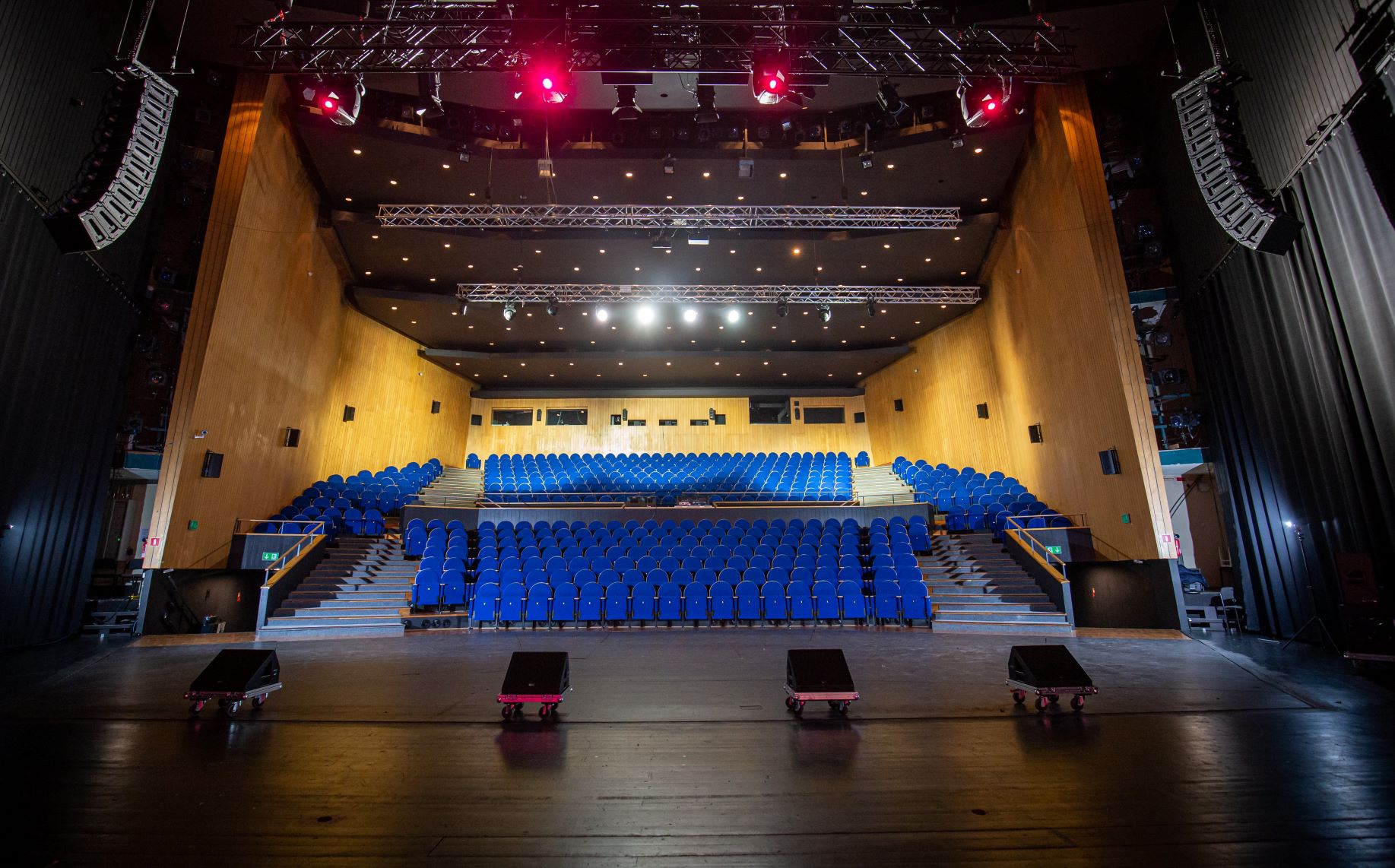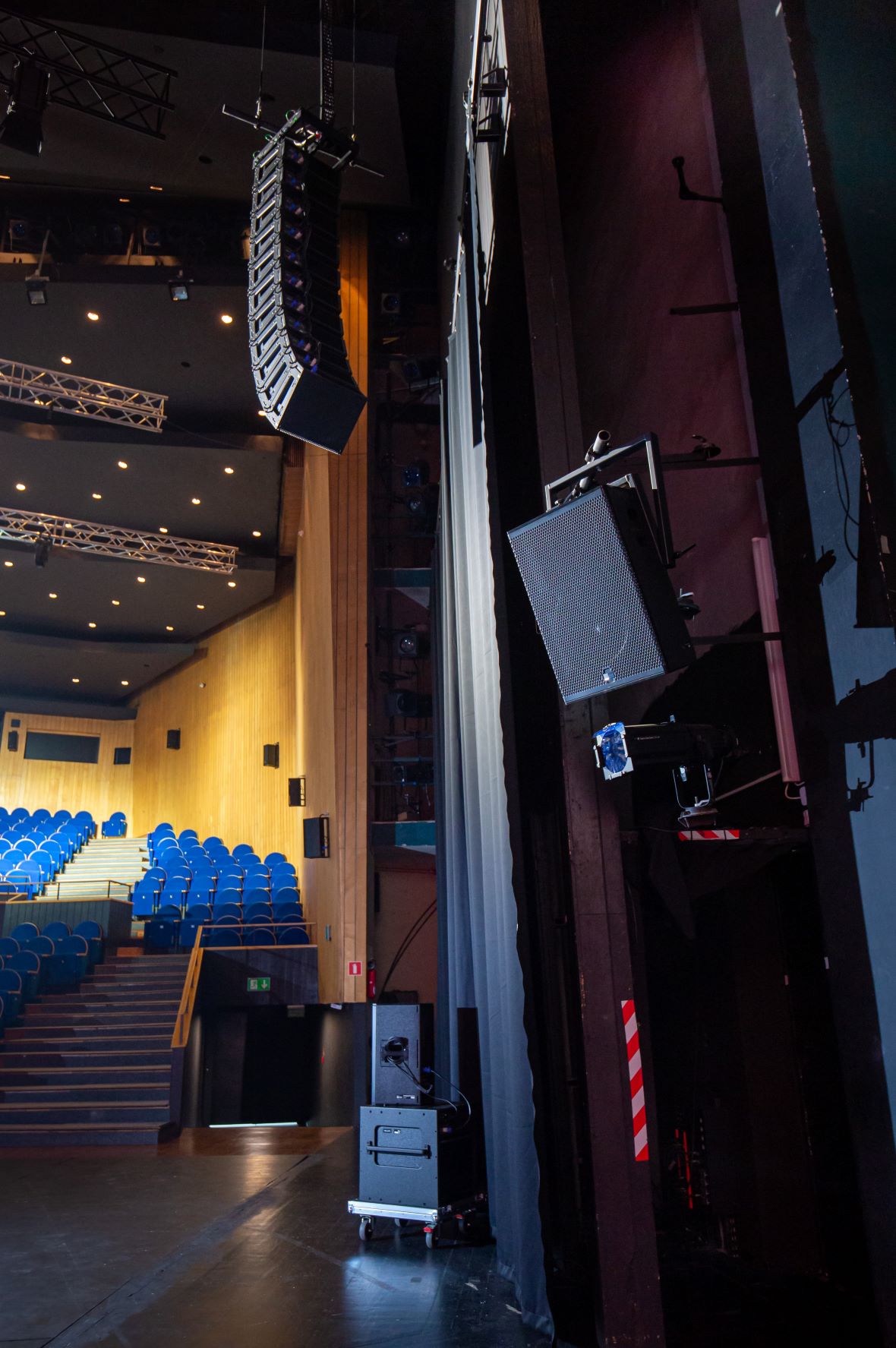With a heritage of cultural leadership extending back to 1945, the Jan Kochanowski Theatre in the southern Polish city of Opole is a multi-stage complex known for a variety of productions ranging from a classic theater festival to cutting‑edge contemporary drama. To keep one step ahead of the most rigorous demands for sound design, the theater recently upgraded its complement of Meyer Sound loudspeakers with the addition of new LINA very compact linear line array loudspeakers and the newest point source systems, the ULTRA-X40 and ULTRA-X20. A total of 44 loudspeakers are now permanently installed in the 575-seat main stage, with 26 additional systems available as needed for reconfigurable systems in the smaller stages.
“Our new Meyer Sound systems offer a precise and transparent representation of the processed audio signal,” said Robert Kondziela, who was the principal consultant on the project. “At the same time, the self-powered concept allows you to easily adjust the system elements to the needs of the current production as you can control each element separately. And you can forget about problems related to the length of loudspeaker cables, which has a direct impact on the quality of the sound.”
[Nearly 300 Meyer Sound Loudspeakers Power the Return of the Montreux Jazz Festival]
The main stage system is powered by left and right arrays of 11 each LINA loudspeakers, with deep bass buttressed by four 900-LFC low-frequency control elements. Fill and effects systems comprise two UPQ-1D and four ULTRA-X40 loudspeakers, with a pair of Galileo GALAXY 816 network platforms supplying system drive and optimization.

Kondziela was particularly impressed by the 12 ULTRA-X20 loudspeakers deployed as a surround and effects system in the main theater, with immersive effects supplied via the free Spacemap Go spatial sound design and mixing tool. “The ULTRA-X20s fulfill their function perfectly. This was noticed by directors working in the space as they have been used by practically every production since installation, including for “Rhotko,” a co-production with the Dailies Theatre in Riga that was nominated for 11 Latvian Theater Awards.”
The theater also maintains an in-house inventory of Meyer Sound loudspeakers that can be freely reconfigured as needed for the smaller stages in the theater complex. Sound designers can choose from a total complement of 14 point-source loudspeakers (ULTRA-X40, UPA-1P, UPA-2P, UPJ-1P, and UPM-1P), eight low-frequency control elements (900-LFC and 750-LFC) and four MJF-208 compact stage monitors, with one each Galileo GALAXY 408 and Galileo GALAXY 816 processors available for signal distribution.
[Meyer Sound's New PANTHER Loudspeaker Makes Global Debut]

The complete renewal of audio systems in the theater complex also included the addition of new DiGiCo digital mixing consoles (one SD10-24T and three SD11), a flexible Optocore fiber optic signal distribution network, and Shure Axient Digital wireless microphone systems with 16 channels for the main stage and 12, eight and four channels respectively for the smaller stages. The new audio systems were installed by the Wroclaw-based integration firm of M. Ostrowski, with design assistance from Krzysztof Polesinski and logistical coordination by Pawel Daszkiewicz of Polsound.
“The presentation of the Meyer Sound, DiGiCo, and Shure systems in our theaters made an impression on me comparable to hearing a Compact Disc for the first time,” said Norbert Rakowski, general and artistic director of the Jan Kochanowski Theatre. “It’s not so much about comparing media but rather about sensory impressions and a qualitative leap. The scale of capabilities of these devices is incredible. The number of advantages, such as the precision of the sound and the scale of configuration possibilities, convinced me immediately that it would be an excellent and, above all, future-proof investment for our theater.”
[AV Network's top stories, product news, and expert insights]
Named after the noted Polish Renaissance poet, the Jan Kochanowski Theatre in Opole has operated under this name and in its current location since 1975, with predecessor organizations extending back to the immediate post-WWII era. It was the first theater in Poland to officially join the prestigious European Theatre Convention.
